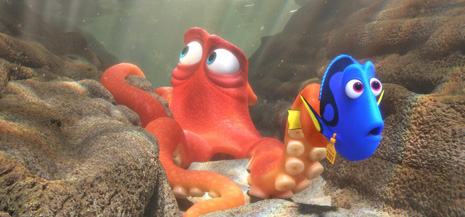|
|
Movie Review: Finding DoryBy Ben GruchowJune 23, 2016
Nowhere is this risk aversion made more evident, though, than in the way Marlin and Nemo are shoehorned into a story that has no use for them; apart from a brief interlude that employs water fountains in an amusing way, the two characters (who are separated from Dory once they arrive at the Institute) are mostly reduced to restating story beats or rehashing character beats. Marlin is particularly egregious; he seems to have regressed fully into the over-cautious parent he was in the first film, which has the undesirable effect of negating much of his character development. Nemo, meanwhile, mostly just sulks around and expresses resentment. Neither of them are actively bad; they’re just flagrantly unnecessary. The artificiality of their contribution to the proceedings is emphasized in their role in the movie’s climax; all of the character beats and resolutions have been worked out by this point, and what’s left is mostly just movement and color. It’s solidly entertaining movement and color in the moment, to be sure, and a slight Pixar movie is almost by default and design going to have more to offer its audience than most of its animated brethren. Were this exact film produced by any rival studio, it’d be a lot harder to criticize in any kind of context. Finding Dory is not a classic, and its lightweight construction contributes to a quick evaporation process that begins once the credits roll, but it’s likable enough on those grounds. Note: Pixar generally screens a short film before each of their features; the short attached to this one is called Piper. It’s a six-minute set piece on a beach featuring a baby sandpiper (among many adults), and it’s a marvel: easily some of the most accomplished naturalistic animation and cinematography the studio has ever put their name to, and a truly wonderful instance of nonverbal, minute, and wholly effective performance. Your mileage may vary on Finding Dory, but Piper is worth the ticket price to see on a big screen on its own.
|

|
|
|

|
Friday, November 1, 2024
© 2024 Box Office Prophets, a division of One Of Us, Inc.


